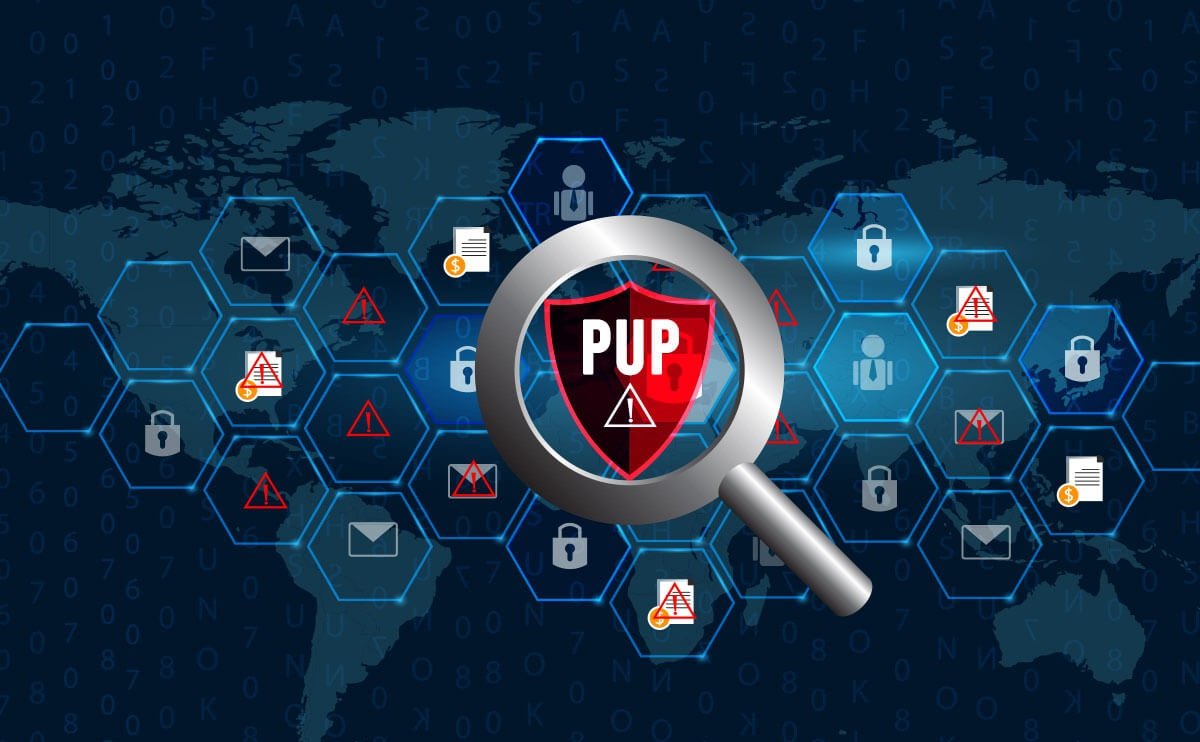 Blog's Page
Blog's Page

The Potentially Unwanted Program Or Potentially Unwanted Application Has Been Created By The Cyber Criminal To Misguide The Users. However, Potentially Unwanted Program May Enter Your Computer System Without Permission Of The Users. Potentially Unwanted Program Will Initiate The Various Aggressive Programs. The Potentially Unwanted Program Can Possible To Give Assistance For ransomware, Spyware, adware, browser Hijacker And Others For Hacking The Computer Terminal.
The Potentially Unwanted Program May Integrate With Spyware To Know The Activity Of The Specific Users. The Potentially Unwanted Program Could Have To Change The Behaviour Of The Computer Function. The Potentially Unwanted Program Can Initialize The Counterfeit Ads To Display In The Compromised Computer System.
Companies Often Bundle A Wanted Program Download With A Wrapper Application And May Offer To Install An Unwanted Application, And In Some Cases Without Providing A Clear Opt-out Method. Antivirus Companies Define The Software Bundled As Potentially Unwanted Programs, Which Can Include Software That Displays Intrusive Advertising (adware), Or Tracks The User's Internet Usage To Sell Information To Advertisers (spyware), Injects Its Own Advertising Into Web Pages That A User Looks At, Or Uses Premium SMS Services To Rack Up Charges For The User.
A Growing Number Of Open-source Software Projects Have Expressed Dismay At Third-party Websites Wrapping Their Downloads With Unwanted Bundles, Without The Project's Knowledge Or Consent. Nearly Every Third-party Free Download Site Bundles Their Downloads With Potentially Unwanted Software.
The Practice Is Widely Considered Unethical Because It Violates The Security Interests Of Users Without Their Informed Consent. Some Unwanted Software Bundles Install A Root Certificate On A User's Device, Which Allows Hackers To Intercept Private Data Such As Banking Details, Without A Browser Giving Security Warnings.
The United States Department Of Homeland Security Has Advised Removing An Insecure Root Certificate, Because They Make Computers Vulnerable To Serious Cyber Attacks. Software Developers And Security Experts Recommend That People Always Download The Latest Version From The Official Project Website, Or A Trusted Package Manager Or App Store.
Historically, The First Big Companies Working With Potentially Unwanted Programs For Creating Revenue Came Up In The US In The Mid-2000s, Such As Zango. These Activities Declined After The Companies Were Investigated, And In Some Cases Indicted, By Authorities For Invasive And Harmful Installs.
Potentially Unwanted Programs Have Increased In Recent Years, And One Study In 2014 Classified Unwanted Programs As Comprising 24.77% Of Total Malware Infections. This Malware Includes Adware According To Google. Many Programs Include Unwanted Browser Add-ons That Track Which Websites A User Goes To In Order To Sell This Information To Advertisers, Or Add Advertising Into Web Pages.
Five Percent Of Computer Browser Visits To Google-owned Websites Are Altered By Computer Programs That Inject Their Own Ads Into Pages. Researchers Have Identified 50,870 Google Chrome Extensions And 34,407 Programs That Inject Ads. Thirty-eight Percent Of Extensions And 17 Percent Of Programs Were Catalogued As Malicious Software, The Rest Being Potentially Unwanted Adware-type Applications.
Some Google Chrome Extension Developers Have Sold Extensions They Made To Third-party Companies Who Silently Push Unwanted Updates That Incorporate Previously Non-existent Adware Into The Extensions.
Some Software Bundles Are PUPs Because They Commit Multiple Small Transgressions Against The User, While Others Commit One Large Transgression Against The User. For Example, PUPs Can Clutter A User's Browser, Track Their Web Browsing Activity And Show Additional Unwanted Programs. Once Installed, A PUP Can Also Do The Following:
Over-advertise To The User. The Potentially Unwanted Program (PUP) Displays Many Advertisements In Pop-up Windows. It Can Also Be A Browser Hijacker, Redirecting Web Search Results, Adding Browser Toolbars And Placing Ads On Pages.
Collect User Information. The Potentially Unwanted Program (PUP) Can Be Spyware, Collecting User Data Without Consent. For Example, Keystrokes From A Keyboard Can Be Monitored To Steal User Data And Gain Additional Knowledge On The User.
Reduce System Resources. By Launching Itself And Performing Whatever Function It Is Programmed To Carry Out, The Potentially Unwanted Program (PUP) Eats Up System Resources, Potentially Slowing Down A User's Computer.
Obscure The Process Of Uninstallation. PUPs (potentially Unwanted Program) May Be Designed To Be Hard To Remove Manually From A User's Computer. They May Not Have An Easy Uninstall Method Or May Not Uninstall Completely.
PUPs (potentially Unwanted Program) Include Different Types Of Software That Are Meant To Cause Various Amounts Of Damage To The User. Many Of These Processes Use Existing Methods To Do So. For Example, Types Of PUPs Include:
To Avoid Accidently Downloading A PUP, Individuals Should:
Although PUPs Can Be Difficult To Remove, Users Can Attempt To Automatically Remove Them Using Antimalware Programs Or Manually Remove Them.
Antimalware Security Tools Can Automatically Detect And Remove PUPs By Scanning A Device And Deleting The Application. Antimalware Programs That Can Detect And Remove PUPs Include Applications Like Heimdal Security Or Sophos Home Premium Antivirus Program.
If A Victim Attempts To Manually Remove A PUP, However, They Will Have To Pay Attention More Closely. The Program May Have Been Created To Not Delete Entirely, For Example, Or The User May Be Asked To Agree To More Terms And Conditions That End Up Downloading Another PUP While Uninstalling The Original Program.
To Avoid Downloading PUPs In The Future, Users Should Pay Attention To The Terms And Conditions When Downloading Software, As Well As The Boxes That Are Selected Or Unselected. Users Can Also Implement Ad Blockers That Stop Ads From Appearing Or Use Antivirus Software That Protects Against PUPs In Real Time.
Potentially Unwanted Program, Pup, Remove Potentia| Links1 | Links2 | Links3 | Products | Social Links |
|---|---|---|---|---|
| Home | Blog | Sitemap | Email Checker Tool | |
| About | CSI Links | ISRO Project Code: AA0802 | Offers | |
| Disclaimer | Gallery | Contact Us | Antivirus | |
| Privacy Policy | Software Downloads |